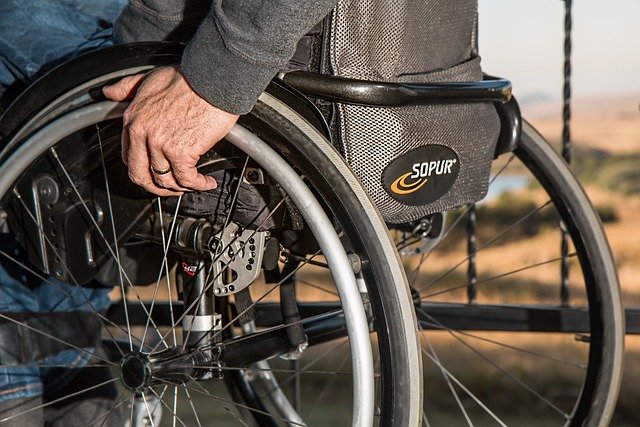Training for Home Care Roles in the United States for English Speakers
Individuals residing in the United States and proficient in English can gain insights into the home care sector. This involves an introduction to care homes and the essential training required. Engaging in training programs can provide foundational knowledge and skills necessary for effective participation in this field.

This guide explains how English-speaking candidates can prepare for caregiving work in the United States, including what home-based support involves, why structured training matters, and how language skills shape daily care. While requirements vary by state and employer, building a foundation in safety, personal care, and communication makes you more effective in people’s homes and with agency teams.
This article is for informational purposes only and should not be considered medical advice. Please consult a qualified healthcare professional for personalized guidance and treatment.
Home care roles in the U.S.: what’s involved?
Home-based support ranges from non-medical assistance to clinical help under supervision. Understanding the role of home care in the United States starts with the common job categories you may encounter. Personal care aides typically assist with activities of daily living (ADLs) such as bathing, dressing, toileting, mobility, meal preparation, light housekeeping, and companionship. Home health aides often perform similar tasks but may work with Medicare- or Medicaid-certified agencies under a clinician’s plan of care. Certified Nursing Assistants (CNAs) usually train and test to a state standard and may provide more clinical support under nurse supervision. In all roles, accurate documentation, privacy, and respect for cultural preferences are essential.
Why training matters for aspiring care workers
The importance of training for aspiring care home workers is both practical and ethical. Foundational instruction typically covers infection prevention, hand hygiene, safe transfers and body mechanics, skin care, nutrition basics, hydration, fall prevention, emergency response, and recognizing changes in condition. Many programs introduce dementia care principles, behavioral de-escalation, communication techniques, and caregiver boundaries. Legal and regulatory topics often include confidentiality and privacy, mandatory reporting of suspected abuse or neglect, patient rights, and workplace safety. In the U.S., roles tied to Medicare-certified services commonly follow federal guidance that includes classroom instruction and a competency evaluation, with states frequently adding hours or specific modules. Beyond compliance, training improves confidence and helps maintain consistent care for clients and families in your area.
Language and communication in care settings
Language considerations in the home care environment directly affect safety, dignity, and outcomes. English proficiency helps caregivers read care plans, medication lists, and safety instructions; follow agency policies; and record notes in electronic systems. Clear, plain-language communication reduces misunderstandings during bathing, mobility, and meal assistance. Techniques such as the teach-back method—asking clients to repeat key instructions—support understanding without sounding patronizing. For clients with limited English proficiency, agencies may use certified interpreters or translated materials; avoid relying on children or untrained bystanders to interpret sensitive health information. Cultural awareness, respectful listening, and avoiding jargon build trust, especially when discussing private topics like toileting, pain, or mood changes. Bilingual skills can be an asset in communities with diverse languages, but accuracy, confidentiality, and documentation in English remain central.
Core training topics and pathways
While details vary by state, credible programs emphasize practical skills and supervised practice. Expect modules on vital signs basics, infection control, glove and mask use, mobility aids (walkers, canes, transfer belts), pressure injury prevention, nutrition and safe food handling, recognizing red flags (sudden confusion, chest pain, shortness of breath), and responding to emergencies while awaiting professional help. Safety-focused instruction addresses fall risks in the home, clutter reduction, safe lifting, and when to escalate concerns. Many employers look for current CPR and First Aid credentials from recognized organizations. Background screening, immunization or testing requirements, and proof of ability to perform job tasks are common. If you plan to work with agencies, research your state’s health department or licensing board to understand the training hours and competency assessments it requires for your target role.
Documentation, privacy, and technology
Accurate documentation supports continuity of care and protects client privacy. You may chart services provided, note changes in condition, and log time using paper checklists or electronic visit verification tools. Good notes are brief, factual, and timely. Respect privacy laws by limiting access to only those who need information to support care and by securing devices and paper records. When communicating with supervisors or nurses, use clear, objective descriptions (for example, “new swelling in left ankle, warm to touch, started this morning”) rather than interpretations. Technology skills—basic smartphone use, secure messaging per agency policy, and safely navigating care apps—help you coordinate transportation, appointments, and local services that support clients at home.
Building professionalism and resilience
Professionalism shows in punctuality, reliability, appropriate boundaries, and respect for client choices. Clear expectations about tasks, safe limits, and when to decline unsafe requests protect both client and caregiver. Emotional resilience matters, too; routines such as scheduled breaks, peer debriefing, and supervisor check-ins help manage stress. Self-care practices—sleep, nutrition, movement, and mental health support—reduce burnout. Observing small wins, like improved mobility or a calmer daily routine, keeps motivation steady. Connecting with reputable community programs, caregiver support groups, and educational resources in your area can reinforce skills and maintain a high standard of care.
Conclusion
Preparing for home-based caregiving in the United States combines role clarity, structured training, and strong communication. English proficiency helps you follow care plans, document accurately, and collaborate with supervisors, while cultural sensitivity and plain language keep interactions respectful and safe. State-specific requirements and employer standards will guide your exact pathway, but focusing on safety, privacy, documentation, and compassionate support creates a reliable foundation for quality care in people’s homes.



